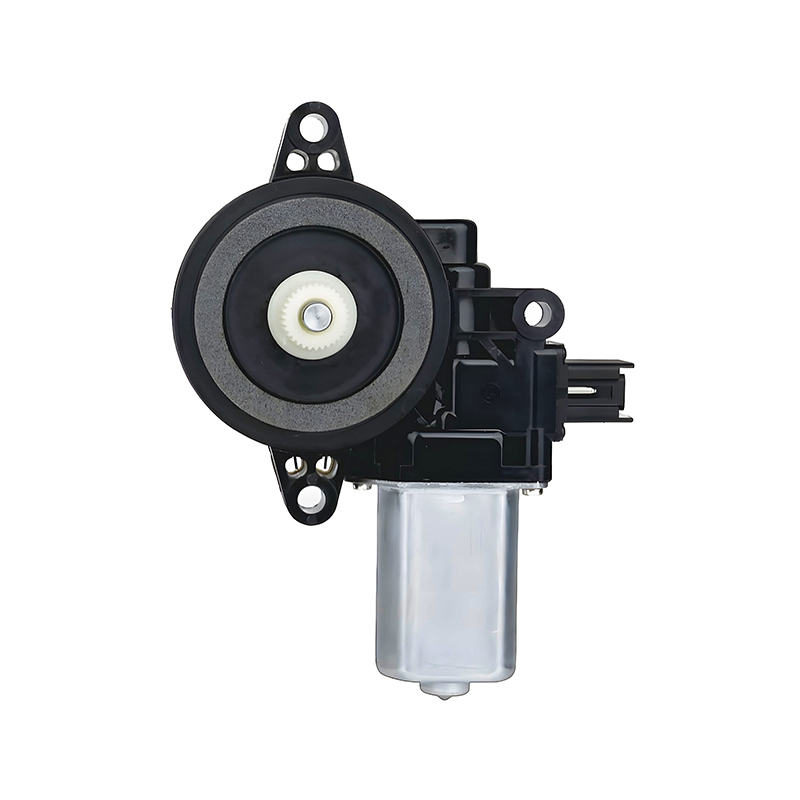This function allows drivers to save and recall their preferred seating positions, ensuring quick adjustments without the hassle of manual repositioning. At the heart of this capability lies the precision drive motor, a component engineered to provide reliable, smooth, and repeatable motion to electric car seat motors.

The electric car seat motor is responsible for adjusting the seat's various positions — forward, backward, reclining, or tilting — according to the driver's needs. However, to offer a memory function, the motor system must perform with exceptional accuracy and consistency, allowing the saved positions to be restored precisely each time. This is where the precision drive motor plays a vital role. It delivers the control and fine movement required for the seat memory function to operate effectively.
When a driver saves a seat position, the system records the motor's exact settings, which the precision drive motor must replicate upon recall. The seamless operation depends on the motor's ability to respond to electronic commands and execute movements without deviation. Unlike traditional manual adjustments, which rely on guesswork, electric car seat motors with precision drive technology bring a new level of convenience to vehicle interiors.
Besides the seat memory function, electric car seat motors equipped with precision drive systems often work alongside other automotive motors, such as the power window winder. The power window winder controls the opening and closing of the car's windows, and both systems require smooth, low-noise operation to maintain an overall sense of quality in the vehicle cabin. The integration of these motors ensures that passengers enjoy a comfortable environment, both in terms of seating position and window control.
The design of a precision drive motor incorporates features that enable it to withstand frequent use without degradation. The seat memory function demands that the electric car seat motor can perform repeated movements over the vehicle's lifespan while maintaining consistent performance. Components such as the gear system and motor coils are engineered to resist wear and deliver steady torque. This ensures that the saved seat positions remain accurate and that users do not experience unexpected drifting or misalignment.
Moreover, the quiet operation of the precision drive motor benefits the entire cabin environment. Noise generated by motorized adjustments can detract from the overall driving experience, but refined motor design reduces vibrations and mechanical noise. When paired with power window winders that also prioritize quiet and efficient operation, the vehicle's interior noise levels stay low, contributing to a more pleasant ride.
The seat memory function supported by precision drive motors also offers safety advantages. Proper seat positioning affects driver visibility, reach to controls, and overall ergonomics, all critical factors for safe driving. With the ability to quickly and accurately return to preferred seat positions, drivers can less distractions while adjusting their seats. This contrasts with manual seat adjustments, which require more time and attention, potentially taking focus away from the road.
Advancements in control electronics have further improved the interaction between the seat memory function and electric car seat motors. Modern systems use sensors and feedback loops that allow the precision drive motor to detect its position in real-time and make fine corrections. This ensures that when a driver recalls a saved setting, the motor precisely aligns the seat with the stored coordinates, even compensating for any mechanical wear that may have occurred.
In addition, vehicles equipped with multiple memory profiles allow different drivers to save their preferred seat positions. The electric car seat motor's responsiveness and the precision drive motor's consistency are critical for supporting these features. Whether switching drivers or adjusting for different driving conditions, the system delivers reliable seat adjustments every time.
The interaction between seat motors and other components like the power window winder also highlights the importance of comprehensive motor design in vehicles. Both systems demand energy-efficient motors that contribute to the overall vehicle's power management strategy. By optimizing motor efficiency, the electric car seat motor and power window winder help maintain battery life in electric vehicles and reduce fuel consumption in conventional cars.
Overall, the seat memory function is a practical feature that adds significant value to vehicle comfort and usability. Its performance depends heavily on the quality of the precision drive motor used in the electric car seat motor assembly. As vehicle interiors continue to evolve, integrating more sophisticated electronic features, the role of these precision motors becomes increasingly prominent.
In conclusion, the precision drive motor supports the seat memory function by enabling accurate, smooth, and repeatable seat adjustments through the electric car seat motor. Its design ensures quiet operation, durability, and energy efficiency, which are also key qualities shared by the power window winder. Together, these components contribute to a comfortable and user-friendly driving experience. The development and refinement of such motor systems continue to enhance vehicle interiors, meeting the expectations of drivers seeking convenience and reliability in every journey.
Your email address will not be published. Required field are marked*